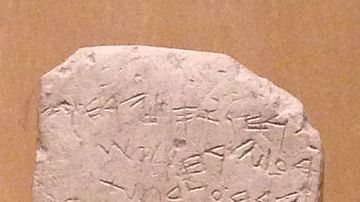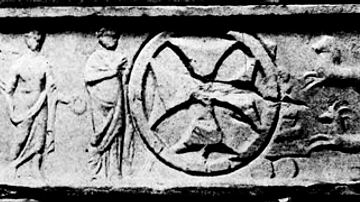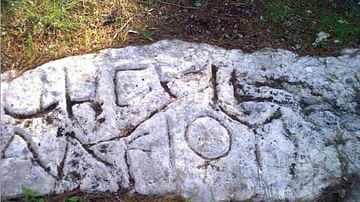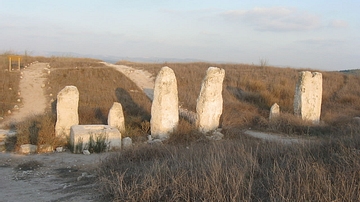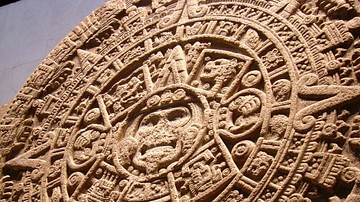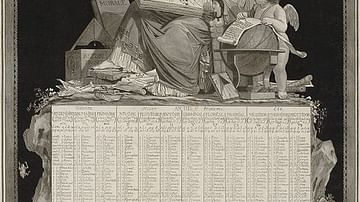Illustration
The Gezer calendar is regarded as the oldest Hebrew inscription as yet known. The inscription is scratched on a tablet of soft, chalky limestone and its lower part is broken and lost. The oblique fracture passes as square thought to have been made for a peg by which it was affixed to a wall. It has seven lines of horizontal writing and the eighth line was written vertically and only partly survives.
Père Vincent* interprets the signs as follows:
(1) Two months, late crops-Two months,
(2) Sowing-two months, spring crops-
(3) One month, cutting flax-
(4) One month, harvest of barely-
(5) One month, all the harvest-
(6) Two months, fruit vines-
(7) One month, summer fruits
(8) Abi
The eighth line "Abi" is interpreted as the name of the person who scribed the tablet. Some scholars believe that the inscription is not a calendar, but a record which gives a rotation of agricultural labors, written for some unknown administrative purpose. It is also thought that the tablet was a kind of a scrap material and some of the signs belonged to earlier writings, which the scribe himself corrected.
Limestone. Circa 925 BCE. From Gezer (Tell el-Jezer), in modern-day State of Israel. (Museum of Archaeology, Istanbul, Turkey).
*Pasinli, Alpay. Istanbul Archaeological Museums. Istanbul: A Turizm Yayınları, 2012.
About the Author
Cite This Work
APA Style
Amin, O. S. M. (2018, June 04). The Gezer Calendar. World History Encyclopedia. Retrieved from https://www.worldhistory.org/image/8765/the-gezer-calendar/
Chicago Style
Amin, Osama Shukir Muhammed. "The Gezer Calendar." World History Encyclopedia. Last modified June 04, 2018. https://www.worldhistory.org/image/8765/the-gezer-calendar/.
MLA Style
Amin, Osama Shukir Muhammed. "The Gezer Calendar." World History Encyclopedia. World History Encyclopedia, 04 Jun 2018, https://www.worldhistory.org/image/8765/the-gezer-calendar/. Web. 16 Apr 2025.



